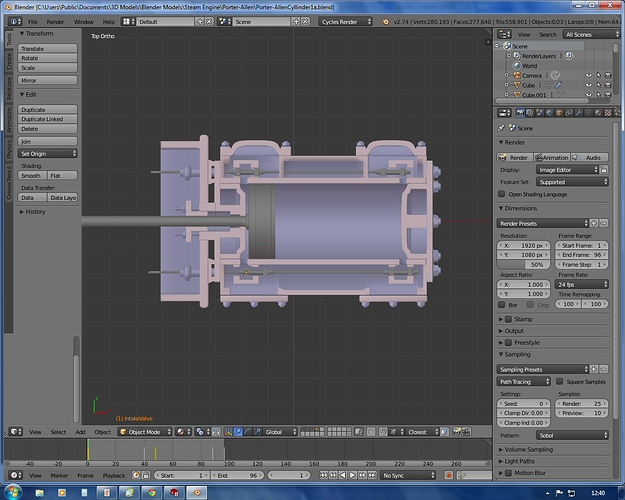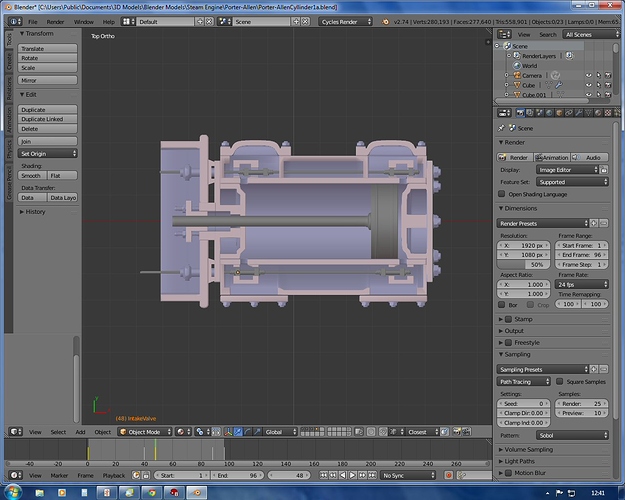Very nice modeling, and of a subject close to my steam-driven heart. 
In this case, I would set up a series of path-curves that emerge from the inlet ports, spread out more-or-less through the cylinder area, then converge again on the outlet ports. Make several such curves going in different directions. Use several Layers (as in “the several buttons …”) to distinguish them.
Now, perhaps, put some lattice objects in there, generally following one of the paths, again using Layers to distinguish them.
And, finally, animate some enlongated curved objects along those paths. As they pass through the lattices, they’ll expand and then shrink again. (You could also animate some short-lived particle emitters along the path …)
Add a nice glow-filter and defocus filter to them, and reduce their alpha. Use these to create an adjustable composite-layer consisting only of this steam. (This approach, using compositing, will let you “tweak” only the steam, rendering only the steam, until you get it “just right.”)
… What you’ll wind up with is an illustration, easily controllable, that will clearly suggest to the viewer that “this is ‘steam,’ but what I really want to show you is how the ‘steam’ moves into and then out of the cylinder.” Your intentions will be immediately obvious to the viewer, your presentation will be clear and uncomplicated, and you will be in-control of the whole thing so that you can quickly get this portion of the shot done and into the proverbial can. Does it “look like real steam?” Uhh, probably not. But, it really doesn’t need to.
(And by the way, you can greatly improve such shots by layering them with other copies of themselves in the compositor, slightly offset in time and at different levels of alpha, with slightly different defocus levels and so on. Cheap-tricks that add perceived volume and visual-complexity without adding time to your schedule.)


